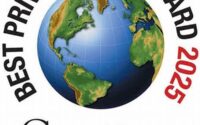Drone Photography Licensing As Passive Asset
Drone Photography Licensing as Passive Asset
In the world of photography, innovation continues to redefine what’s possible, and drone photography stands at the forefront of this revolution. Picture this: once upon a time, aerial shots were the domain of big-budget productions, requiring helicopters, massive rigs, and a blockbuster-sized bank account. Today, with just a drone and a bit of ingenuity, captivating images from previously unreachable heights are at your fingertips. As professionals and enthusiasts alike harness the power of this technology, a new question arises: how can one transform this creative pursuit into a sustainable income stream? The answer lies in creating a business model that includes drone photography licensing as a passive asset. By devising a strategy that turns your work into a licensed commodity, you not only showcase your artistic prowess but also build a revenue stream that operates independently and continuously.
Read More : Digital Skills Training Products Gain Global Buyers
In today’s digitally-driven marketplace, drone photography licensing as a passive asset offers an unparalleled opportunity for photographers to expand their reach. Businesses, marketers, and content creators are always on the lookout for high-quality images to enhance their projects and campaigns. Offering licenses to your drone photography allows them to legally include your breathtaking shots in their materials, while you sit back and reap the rewards. It’s not just about earning money; it’s about maximizing the potential of your craft and touching every corner of the globe with the uniqueness of your perspective. By transforming your portfolio into a licensed gallery, you create a passive income stream that continually grows as your images spread across various platforms.
Why Drone Photography Licensing is Lucrative
Licensing your drone photography is a game-changer because it opens doors to endless opportunities. Consider this—a single stunning aerial shot of a cityscape at sunset could be licensed for web use, print, advertisement, and more. Each usage becomes a transaction, earning you passive income without additional effort. Furthermore, as your portfolio grows, so does your reputation, drawing more clients eager to capitalize on your unique eye and photographic skill. It’s like planting seeds; as your gallery gains traction, your potential earnings grow exponentially.
In essence, drone photography licensing as a passive asset is more than just a side hustle; it’s a strategic move for those looking to build a sustainable career in photography. The concept allows you to share your artistic vision with a broader audience, all while creating a diverse and continuous income stream. The beauty lies in its simplicity—let your creativity soar, capture the world from your vantage point, and watch as your passive income blossoms from the skies.
—
Discussion on Drone Photography Licensing as Passive Asset
Unlocking New Avenues with Drone Licensing
One of the most compelling aspects of drone photography licensing as a passive asset lies in its ability to create a steady revenue stream with relatively minimal effort after the initial setup. Imagine licensing as a premium subscription service but for your imagery, where companies pay for the privilege to use your distinctive aerial shots for their branding or marketing. This means potential income from diverse sectors like real estate, tourism, advertising, and even film making. As businesses continually look for captivating visuals to stand out in a saturated market, your licensed drone photography becomes an in-demand commodity, doing the legwork while you focus on creating more stellar content.
The Appeal of Creative Freedom
The allure of drone photography licensing extends beyond financial gains. For creatives, it presents an opportunity to focus exclusively on what they love—capturing beautiful images—while the business aspect of their work runs in the background. This separation of tasks allows photographers to enhance their craft, search for extraordinary locations, and experiment with daring angles and lighting techniques, knowing their previous works are continuing to generate income. No longer tied down by the constraints of direct client requests, the creative process becomes more about personal vision and artistic exploration.
Overcoming Challenges in Licensing
However, entering the drone photography licensing market isn’t without its challenges. Photographers must familiarize themselves with the legalities involved in licensing, including understanding the rights and restrictions applied to their images. Moreover, marketing is a crucial component; photographers must ensure that their works reach the right audiences, requiring an understanding of effective online platforms and digital marketing strategies. Despite these hurdles, the rewards far exceed the challenges for those who are committed to turning their passion into a profitable venture.
Pathway to Influence and Impact
Another notable aspect is the opportunity to influence how drones and aerial imagery are perceived in mainstream media. Photographers who successfully license their work contribute to the ever-growing archive of drone photography used in multiple realms of visual media, thereby shaping public perspectives and enhancing technological appreciation. Here, influence can be as powerful as the revenue potential, underscoring the significance of drone photography in modern storytelling.
Conclusion: Take Action Now
The time for action is now. As the drone photography industry continues to soar, positioning yourself early within the realm of licensing could very well be the strategic move that defines your career. Whether you are an established photographer or an eager newcomer, drone photography licensing as a passive asset unlocks a spectrum of possibilities. Your aerial masterpieces deserve a wider stage, and with licensing, they gain a global audience all while rewarding you financially. So, why wait? Explore licensing opportunities and invest in your creative future today.
—
Summarizing Key Points
—
Discussion and Insights
The Importance of Networking
In the realm of drone photography licensing as a passive asset, networking plays a pivotal role. Establishing connections with key stakeholders within industries that frequently utilize visual content—such as advertising agencies, filmmaking companies, and tourism boards—can exponentially increase the likelihood of your photography being used and recognized. Leveraging platforms like LinkedIn or participating in photography expos can set the stage for not only promoting your work but also for learning industry trends and demands.
By interacting with these stakeholders, you gain valuable insights into what kind of imagery is currently in high demand, allowing you to tailor your craft to meet market needs while expanding your personal network. Networking is not just about selling your images; it’s about selling yourself as a brand, creating a personal rapport that can lead to more significant opportunities and collaborations.
Exploiting Online Platforms
The digital era offers myriad platforms to showcase drone photography, many of which can be lucrative avenues for licensing. Websites dedicated to stock photography, such as Shutterstock, Adobe Stock, and Getty Images, serve as virtual storefronts for your aerial images. These platforms do much of the legwork in marketing and selling your content, taking a percentage of the income in return. The key is to optimize your portfolio with strong, descriptive keywords, ensuring your images are easily discoverable by prospective clients.
Social media, too, plays a vital role in marketing your drone photography. Instagram, with its focus on visual content, provides a bustling marketplace where photographers can reach audiences directly, building brand recognition and potentially leading to licensing inquiries. A strong online presence not only enhances visibility but also solidifies your status as a professional drone photographer, paving the way for passive income through licensing.
H3: Future Trends in Drone Photography Licensing
With technology rapidly evolving, the future of drone photography licensing is promising and filled with potential. As drones become more sophisticated, capable of capturing higher resolution images and videos, the demand for such content will only grow. Parallel to this technological escalation is an increasing appreciation for visually driven stories and content, magnified by the entertainment and advertising industries’ reliance on unique, engaging visuals.
Photographers who stay informed of technological advancements and understand market trends will be positioned ideally to capitalize on these changes. Furthermore, with augmented reality and virtual reality experiences becoming mainstream, there’s a burgeoning market for immersive, 360-degree drone-shot content—a niche where savvy photographers can license their works for a premium.
Final Thoughts
In conclusion, the path to success in drone photography licensing as a passive asset requires strategy, awareness, and persistence. While challenges exist, the potential for revenue and influence in how visual stories are told is significant. With technology and the creative economy continuing their upward trajectories, drone photography remains a contemporary field ripe with opportunity. For photographers seeking to maximize their craft’s revenue potential and global reach, licensing stands not only as a viable option but a strategic imperative for future creative and financial growth.
—
Comprehensive Insights into Drone Photography Licensing as Passive Asset
Key Elements to Consider
—
Short Content Piece: Drone Photography Licensing as Passive Asset
Diving Into the World of Passive Income
Have you ever considered flipping the script on traditional photography careers by exploring the world of drone photography licensing as a passive asset? With this innovative approach, photographers everywhere can transform their portfolios into lucrative, passive income sources without the hustle of daily client interactions. Imagine letting creativity lead your day while your existing work generates substantial earnings on autopilot.
For the uninitiated, drone photography has become an essential tool for capturing breathtaking aerial visuals which were once mere aspirations reserved for large-budget productions. But now, with licensing as a viable path, your art gets the chance to touch lives and enhance brands while providing you financial freedom. An increasing need for drones in marketing and content creation signifies a golden era for photographers who choose to license their work.
Understanding the Licensing Landscape
However, as straightforward as it might sound, licensing requires more than mere talent behind the lens. Delving into the world of intellectual property laws and obtaining a solid understanding of how to navigate licensing agreements is crucial. Not only does this safeguard your artistry, but it ensures fair compensation and minimizes legal risks.
Digital platforms are ripe for exploration. Uploading collections to stock photography websites, or even setting up your own digital gallery, is a great start. Equally important is maintaining a vibrant social media presence to engage potential clients who might prefer a more personalized approach to licensing arrangements. Consistency and creativity will set your brand apart.
Expanding Horizons
The journey doesn’t end with licensing; it marks a new beginning. Consider how technological advancements continually enhance drone capabilities, unlocking possibilities for even more impressive, high-resolution data gathering. Engaging in this dynamic landscape, you stand at the forefront of innovation.
Keep an eye on exciting trends like immersive reality content, which proposes vast opportunities for those ahead of the curve. As drones become synonymous with storytelling, your ability to adapt, evolve, and innovate will determine your success. Happy flying, and even happier earning!


